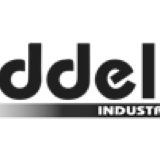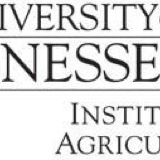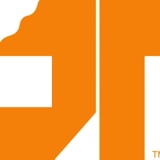Information
-
Audit Title
-
Conducted on
-
Document No.
-
Client / Site
-
Personnel
-
Prepared by
-
Location
A - Previous inspection
-
Has the last inspection been reviewed, items corrected and documented?
1.0 Control of hazardous energy - Lockout Tagout 1910.147
-
Is there a written LOTO program of procedures, training, and periodic inspections?
-
Are the proper LOTO devices available for all energy sources available?
-
Have your authorized workers that use lockout/tagout been trained on the procedures?
-
Do you have a contractor safety program to insure they use safe work procedures such as lockout/tagout when working on equipment?
2.0 Chemical handling and storage 1910.120
-
Are flammable chemicals stored in approved self closing safety cabinets that do not exceed 120 gallons?
-
Are open drums and containers stored on spill containment pallets or pans.
-
Are approved secondary containers utilized, are they labeled properly and are they compatible with its contents?
-
Are employees using the proper PPE for the chemicals they are handling such as Nitrile gloves, goggles, safety glasses or face shields??
3.0 Chemical - RTK and GHS compliance - MSDS 1910.1200
-
Have employees been trained on hazard communication and the new GHS "employee right to understand" system
-
Are secondary bottles labeled to meet GHS compliance with pictogram to indicate hazards along with first aid and specific hazard warning instructions.Are
4.0 Compressed gas 1910 Subpart M
-
Are compressed gas cylinders stored to prevent tipping or falling
-
Are compressed gas cylinders capped with a metal protecting cover when not in use?
-
Do empty cylinders have their valves closed? 1910.253(b)(2)(iii)
-
Are propane tanks stored in a secure cage or rack to prevent them from tipping?
6.0 Employee training 29CFR part 128
-
Personal protective equipment -Does the employer have certification with employee’s name, date and subject of per- sonal protective equipment training? 1910.132(f)(4)
-
Lockout Tagout - Does the employer have certification that training has been accomplished and kept up to date including each employees name and training dates? 1910. 147(c)(7)(iv)
-
Hazard Communication - Does the employer maintain documentation of the employee name and contents of haz- ardous communication training? 1910.1200(h)(3)
-
Confined Space - Does the employer have documentation of each employee’s name, the signatures or initials of trainers and the dates of the train- ing? 1910.146(g)(4)
-
Blood borne pathogen - Does the employer have documentation of training, including the contents of the train- ing sessions, names and qualifications of trainers, names and job titles of those trained? (Note: Documentation must be kept for three years.) 1910.1030(h)(2)(ii)
-
Facility conducts comprehensive employee hazard training and ensures all participate; in addition, employees can demonstrate proficiency in, and support of areas covered by training?
7.0 Dock and warehouse safety 1910 Subpart N
-
Loading area clean and tidy to prevent falling objects, slips trips or fall hazards?
-
Are rack uprights and beams in good condition? Bent racks and beams must be repaired or replaced. All racks should be bolted
-
Pallets must be in good condition. Empties must be stored properly. No broken or protruding wood or nails. No pallets on edge. Avoid storing empty pallets in quantities or densities in excess of O.H. fire sprinkler combustible load ratings.
-
Aisles and forklift zones are indicated to protect pedestrians
-
Are open docks with a fall hazard that exceeds 36" protected with a restraint and warning signage?
-
Wheel chock required and utilized when loading or unloading trailers with forklifts?
8.0 Ergonomics Title 8 section 5110 and 5(a)(1) (GDC)
-
Can work be done without repetitive twisting, bending or lifting of the arms above the shoulder level?
-
Can employees keep their hands or wrists in a neutral position when they are working?
-
Where workers are exposed to strains and sprains do you conduct warmup exercises or rotate workers to prevent repetitive motion injuries?
-
If workers have to push or pull objects using great amounts of force, are mechanical aids provided?
-
Are there sufficient rest breaks, in addition to scheduled rest breaks, to relieve stress from repetitive-motion tasks?
-
Is work arranged so that workers are not required to lift and carry too much weight?
-
Are pressure points on body parts such as wrists, forearms, backs of thighs avoided?
-
Are workers exposures to excessive vibration from tools or equipment avoided?
-
Are chairs and work benches adjusted, positioned, and arranged to minimize strain on the body?
-
Are tools, instruments, and machinery shaped, positioned, and handled so that tasks can be performed comfortably?
-
Are mechanical assists available to the worker performing materials-handling tasks?
9.0 Housekeeping 1910.22
-
Entry and walkways kept clear?
-
Walkways adequately and clearly marked?
-
Floor surfaces even and uncluttered?
-
Are footpaths in good condition?
-
Are fall preventive measures in place and used where gaps occur in railings?
-
Are liquid spills removed quickly?
-
Intersections kept clear of boxes etc?
-
Is there a cleaning program for combustible dust in saw/router areas?
10.0 Emergency preparedness 1910.38
-
Are there equipment specific energy control procedures in place and utilized?
-
Evacuation plan and maps displayed and understood by all employees?
-
Do employees know where to go (a safe zone) and do you have roll call procedures in place?
-
Do you conduct mock drills to prepare workers and staff for an emergency?
-
Are emergency numbers posted and up to date in a conspicuous location.
-
Do you have spill kit or emergency supply's stored in a location that is safely accessible in an emergency evacuation?
11.0 Electrical safety 1910 Subpart S
-
Do electrical panels and disconnects have 36" radial clearance for emergency access?
-
Are electrical panels, disconnects and breakers labeled as to what they control?
-
Are electrical panels and disconnects clear of obstruction and easily accessible?
-
Observed electrical panels and disconnects or junction boxes did not contain open slots, uncapped conduit holes, discontinued circuits or uncovered wiring
-
Are electrical panels and disconnects labeled with amperage and voltage?
-
Are the facilities maintenance employee trained and using safe (Arc Flash 70E and electrical safety procedures when working on HOT circuits)?
12.0 Emergency equipment 1910.157 and 120
-
Are first aid kits available, applicable for the facility, stocked and readily available?
-
Fire extinguishers and fire equipment inspected and unblocked? 36" clearance?
13.0 Exits 1910 Subpart E
-
Exits clear of obstructions?
-
Are doors on cold-storage rooms provided with inside release mechanisms that release the latches and open the doors?
-
Adequate direction notices for routes of emergency exits?
-
Where exit doors open directly onto a street, alley, or other area where vehicles may be operated, are adequate barriers and warnings provided to prevent employees from stepping directly into traffic?
-
Emergency exit lighting operable?
14.0 - Fire Prevention 29 CFR 1910.39
-
Are exit doors able to open from the direction of exit travel without the use of a key or special knowledge or effort?
-
Oily rags and combustible refuse in covered metal containers?
-
Fire alarm system functioning correctly?
-
Evacuation plan displayed and understood by all employees?
-
Extinguishers clear of obstructions?
-
Evacuation procedures discussed regularly? (3 to 4 times a year)
15.0 Forklifts and pallet jacks 1910.178
-
Forklift and lift operators have current training certifications and are operating the trucks safely
-
Are forklifts being inspected daily for safety and maintenance issue with documented checklist?
16.0 General Duty Safety Clause 5(a)(1) (GDC)
-
The employer must provide a safe and healthy workplace for all workers. Unclassified general conditions were observed?
-
The employer must provide a safe and healthy workplace for all workers. Unclassified general conditions were observed?
-
The employer must provide a safe and healthy workplace for all workers. Unclassified general conditions were observed?
-
The employer must provide a safe and healthy workplace for all workers. Unclassified general conditions were observed?
17.0 Inspections and procedures 5(a)(1) (GDC)
-
Lockout Tagout - Are certifications kept that the required periodic audits of energy control procedures have been performed? 1910.147(c)(6)(ii)
-
Forklifts- Are daily or pre-shift industrial truck inspections kept? 1910.178(g)(7)
-
Are you conducting monthly period safety inspections to document a safe work environment?
18.0 Machine guarding 1910 Subpart O
-
Guards firmly secured and not easily removable?
-
Point-of-operation guards provided and in place?
-
Guards provide for any other hazardous moving part of the machine?
-
Machine controls within easy reach of the operator?
-
Belts and chain drives guarded?
-
Guards prevent worker’s hands, or any parts from making contact with moving parts?
-
Gears, sprockets, pulleys, and flywheels guarded?
-
Pinch points and inward running rollers are properly guarded?
19.0 Machine shop and maintenance area 1910.215, Subpart P,Q,O
-
When welding is the proper ventilation in place, is there a shield to protect other workers and are employees trained on safe welding and hot work procedures?
-
Are maintenance records kept to show PM or other regular maintenance performed to verify equipment in facility is kept in safe working condition?
-
Bench Grinders - Is there clearance between the wheel side and the guard of not more than 1/16 inch? 1910.215(b)(1)(iii)
20.0 Management and employee involvement 5(a)(1) (GDC)
-
Are employees actively participating in the near miss program & do they understand the definition?
-
All managers have received formal training in safety and health management responsibilities?
-
Management follows the rules and usually addresses the safety behavior of others?
-
Employees feel they have a positive impact on identifying and resolving safety and health issues?
-
A majority of employees can give examples of management's active commitment to safety and health?
21.0 Noise exposure 1910.95
-
Are noise levels in any areas above 85 decibels for an 8 hour period
-
If yes are employees required to wear hearing protection and is it well stock and readily available?
-
Do you conduct annual audio metric testing for workers exposed to excessive noise?
-
Are areas posted where hearing protection is required?
22.0 Personal protective equipment -PPE 1910.132
-
Is personal protective equipments available for the hazards applicable to your facility?
-
Are workers using the PPE properly and have they been trained?
-
Are engineering controls in place to protect workers before PPE is utilized?
23.0 State and federal postings. DOL and State req.
-
Sate and federal posters are current and the information that is required to be filled out by the employer is up to date.
-
Are forklift safety rules posted in areas where forklifts are present.
24.0 Unsafe acts and conditions 5(a)(1) (GDC)
-
Unsafe acts were observed on this inspection and either the employee was told to stop the act immediately or the supervisor was notified.
-
Unsafe conditions not listed were observed on this inspection and serious conditions were brought to the attention of the supervisor to be corrected immedialty.
25.0 Warning signs and labels 1910.16
-
Warning signs, stickers or labels were placed in areas or on equipment to notify or warn employee of specific hazards.
26.0 Office Area
-
Aisles, walkways, and work areas are free of trip and fall hazards (i.e. torn carpets, turned up edges of door mats, boxes etc.)
-
Illuminated exit and emergency lighting working properly?
-
First aid kits and fire extinguishers available and inspected regularly.
-
36” clearance is maintained in front of all electrical panels and fire extinguishers
-
Electrical cords and plugs are in good condition (i.e., not frayed, taped, spliced, or ground prong missing)
-
Exit paths are free of boxes/materials at all times
-
Computer work stations and work area are ergonomically correct and workers are working safely
-
Work and storage areas are free of improper storage (e.g., heavy, high and/or unstable storage)
27.0 Respiratory Exposures
-
Have welding fume exposures been evaluated?
-
Have exposures in painting areas been evaluated?
28.0 Environmental Concerns
-
Are all hazardous waste streams managed appropriately?
-
Auditor









